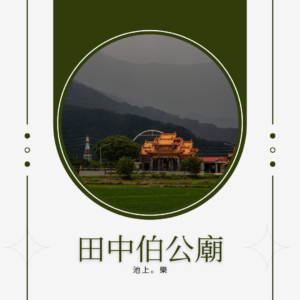Tianzhong Baogong Temple (also known as Fude Temple) is located at the northern edge of Chihshang Township, standing at an elevation of 260 meters above sea level. The temple faces south and is surrounded by the vast, fertile rice fields of Chihshang Plain. The temple is uniquely positioned with the Taiwan Railway tracks running behind it. Every year, during the blooming of rapeseed flowers in January and when the rice grains turn golden and full in June and November, the temple becomes a popular spot for photographers who come to capture the beauty of the temple, the passing train, and the scenic rice fields and rapeseed flowers.

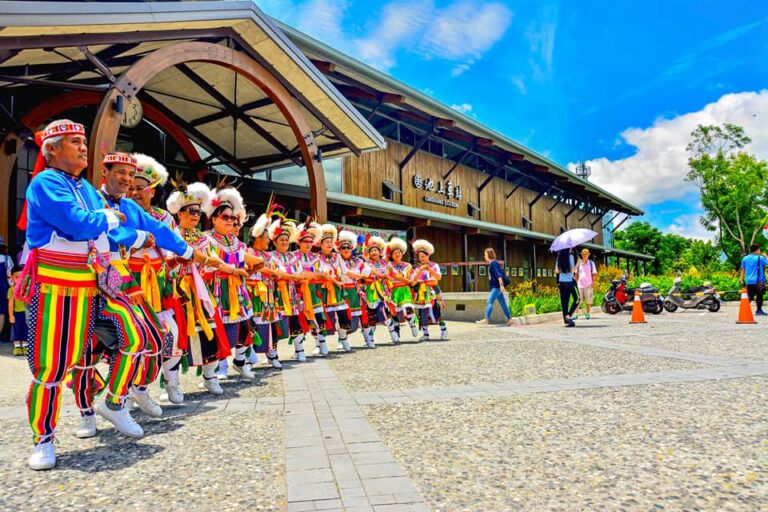
Chihshang is characterized by a diverse terrain that includes plains and lakes, bordered by the Coastal Mountain Range to the east, the Central Mountain Range to the west, and the Xinwulü River to the south. It is also home to one of the world’s rare active fault lines. With its fresh air and peaceful atmosphere far removed from urban hustle, Chihshang lies in the East Rift Valley yet offers wide-open views. The silhouette of the mountains creates a perfect dark canvas for stargazing, enhancing the poetic quality of the night sky. Its idyllic rural scenery is both serene and elegant.
As a key destination along the East Rift Valley tourist route, Chihshang is easily accessible: the Southern Cross-Island Highway connects here, a major provincial highway runs through the township, and the express Tze-Chiang Limited Train makes regular stops. Since the early Qing era, the region has been cultivated primarily for rice. With its fertile soil and favorable climate, Chihshang has long been an ideal place for high-quality agricultural production. In recent years, the township has led the nation in implementing a certified “Chihshang Rice” label, aligning with various agricultural policies to transform local farming practices and build a premium rice brand. As Chihshang rice gains recognition throughout Taiwan, its agricultural environment has attracted growing attention. The farmlands cultivated by early settlers not only produce excellent rice but also preserve the traditions of agricultural culture. In areas like Xinkaiyuan and Loutian, one can still deeply experience the township’s rich heritage and rural spirit.
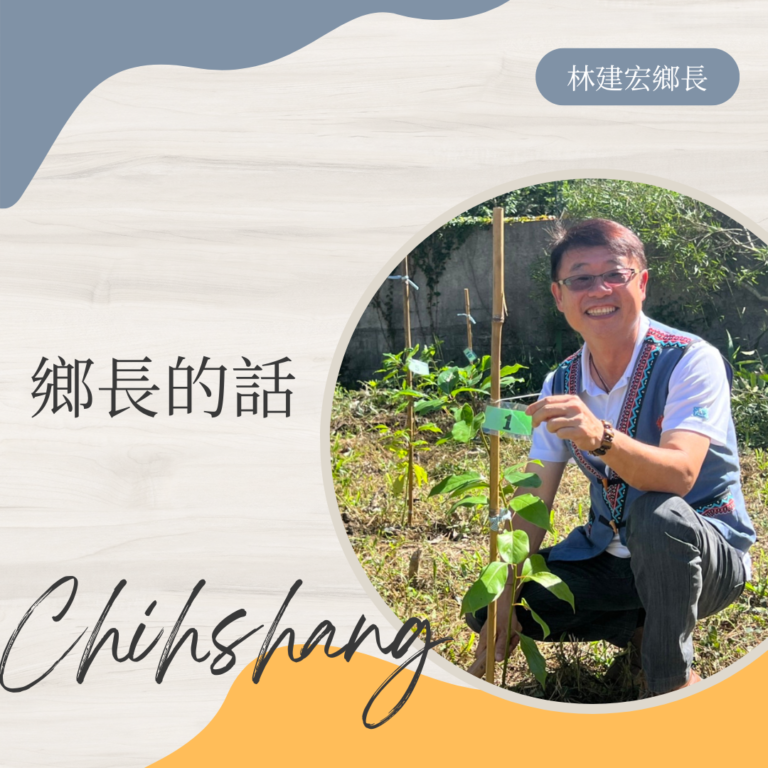
From the beginning of spring to the winter solstice, from the iconic Mr. Brown Avenue to the serene Dapo Pond, Chihshang offers breathtaking scenery year-round. Throughout the seasons, events like the Spring Farming Picnic Festival, the Autumn Harvest Art Festival, the Bamboo Raft Carnival, and the Chihshang Starlit Cittaslow Nights continuously welcome visitors from all over with vibrant celebrations.
Supported by its rich natural and cultural heritage and the collective effort of local residents, Chihshang Township successfully passed the certification process of the international Cittaslow organization in June 2024. Notably, it achieved one of the highest evaluation scores among all applicant cities worldwide, a testament to Chihshang’s remarkable progress and performance across key indicators such as environmental sustainability, social cohesion, and cultural preservation. This is a great honor for Chihshang, and we are proud to share it with our fellow members of the Cittaslow Taiwan Alliance and the people of Taiwan.
We sincerely invite you to visit Chihshang and experience its unique charm and captivating landscape. Whether savoring authentic local cuisine, exploring the rich and diverse cultural heritage of the Hoklo, Hakka, and Indigenous communities, or simply enjoying the tranquil beauty of nature—sunlight on the fields, drifting clouds, or a sudden gust of wind—Chihshang promises to fulfill your deepest longings and offer unforgettable moments in this peaceful haven.
Looking ahead, Chihshang will continue to introduce innovative measures to enhance quality of life. We are honored to join the Cittaslow Taiwan Alliance and look forward to working together with our fellow members to create a better, more livable future for all.
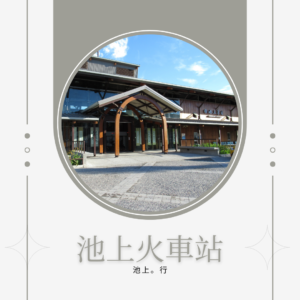
Chihshang Railway Station
Rebuilt on the original site of the old station, Chihshang Railway Station features a granary-inspired design that shelters the system control room beneath an elongated structure. This extended form incorporates a gently sloping ramp that bridges the height difference between the station plaza and the platform, creating a unique “corridor connection” that defines the station’s architectural character.
The design transforms the historic image of agricultural granaries into a modern station symbol, reinforcing local identity and evoking the distinctive regional character of Chihshang. Inside this granary-like volume are an open station hall and a corridor beside the enclosed control room, where glass and wooden panels interact on the façade, creating a play of transparency and solidity.
Walking through this wood-framed space—like stepping into a time tunnel—offers travelers a striking first impression of Chihshang.
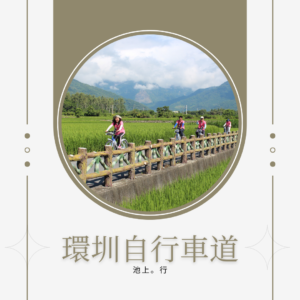
Huanzun Bicycle Path
The Huanzun Bicycle Path in Chihshang Township loops around the main rice-producing area on the eastern side of Provincial Highway 9. Along the route, cyclists are treated to expansive rural landscapes, scenic farm lanes, and distant views of both the Central and Coastal Mountain Ranges. The path is flat and easy to ride, making it suitable for riders of all ages.
Starting at Fengze Bridge by Dapo Pond, the main cycling route connects a series of charming attractions including Duyuan, the Little Waterwheel, Mr. Brown Avenue, Bao’an Temple, and the Wan’an Brick Kiln. This path offers a perfect way to experience the essence of Taiwan’s rural life and rice farming culture, allowing riders to enjoy the tranquility and simplicity of nature at a leisurely pace.
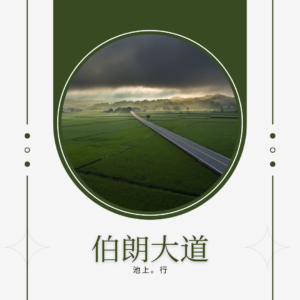
Mr. Brown Avenue
Originally just a straight country road in Chihshang Township, Mr. Brown Avenue gained fame from a Mr. Brown Coffee commercial and later regained popularity through an EVA Air advertisement featuring actor Takeshi Kaneshiro. Known as the “Verdant Road to Paradise,” the avenue is flanked by vast, uninterrupted rice paddies and is famously free of utility poles, offering city dwellers a rare sense of openness and peace of mind.
The simple bench under the tree and the traditional tea-serving scene evoke the warmth and charm of rural hospitality, making it one of the must-visit photo spots for all who come to experience the tranquil beauty of Chihshang.
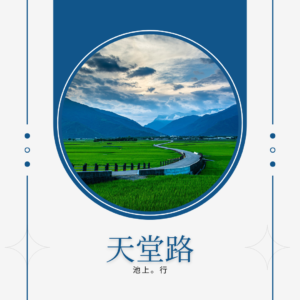
Road to Heaven
Set against a backdrop of vast, boundless rice paddies, this winding S-shaped path stretches toward the sky, earning it the name “Road to Heaven.” It intersects with the northeast-southwest oriented Mr. Brown Avenue and leads the eye to the towering peaks of the Southern Cross-Island Highway. With its layered foreground, middle ground, and distant mountains, it’s a favorite spot for photography, known for quickly filling up memory cards.
At the entrance stands a swing—now a major photo hotspot—created by Indigenous artist Sabu Gazaw. Titled Nature’s Healing, this crescent-moon-shaped swing set against the stunning rice field has been hailed as the “Heavenly Swing,” a model success of public art installation blended beautifully with the landscape.
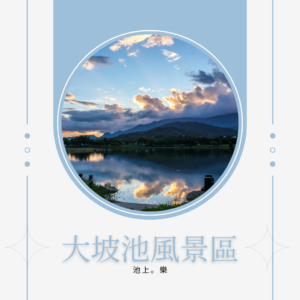
Dapo Pond Scenic Area
Dapo Pond is the main wetland in the Hualien-Taitung Valley, renowned for its beautiful scenery. Prior to the 1950s, the pond was abundant with various fish species such as crucian carp, carp, catfish, bass, and small fish, and many families along the shore made their living by fishing in the pond. Aquatic plants like water caltrops and lotus flourished in the pond, while wild birds, including water ducks and bamboo pheasants, made it a paradise for both resident and migratory birds. In the past, it was common to see anglers fishing by the pond, while fishermen used bamboo rafts to catch fish and shrimp, creating a scene that resembled a paradise on earth.
However, after the 1970s, the pond’s area shrank due to sedimentation and the construction of drainage facilities. Nevertheless, through artificial development, Dapo Pond regained its charm. Today, Dapo Pond remains an excellent spot for local residents and tourists to enjoy the scenery and relax.
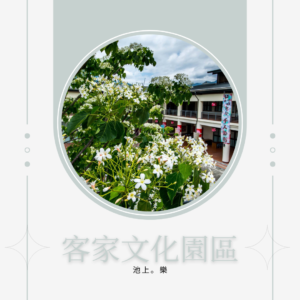
Hakka Cultural Park
Located in Jhutian Township, Taitung County, the Taitung Hakka Cultural Park covers approximately 6.5 hectares. The entrance is adorned with various wooden sculptures that convey the imagery and spirit of the Hakka people who migrated from the east, crossing mountains and seas. In front of the park lies a vast flower field, which becomes even more vibrant during the annual Flower Festival, where a colorful array of flowers blooms in full splendor.
The park is mainly divided into an exhibition area on the first floor, a library area on the second floor, an antique display area, and an interactive media area. It showcases various cultural aspects of the Hakka communities in the Eastern Rift Valley, including their lifestyle and industries. The park regularly hosts diverse and enriching activities such as Hakka opera performances, Hakka craft experiences, and traditional toy-making workshops. These activities not only display the unique social meanings and cultural experiences of the Hakka people but also leave visitors with a deep sense of excitement and fulfillment.
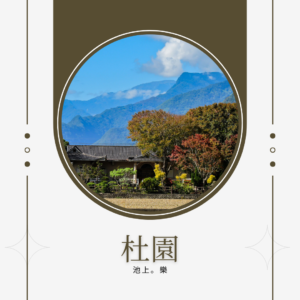
Du Garden
Located in Xinxing Village, Du Garden was established by Mr. Du Junyuan and his wife, Ms. Yang Meicuo, in memory of his father, Mr. Du Jinzhi, and his mother, Ms. Wang Yuan. The garden was built on the site of the ancestral home of his parents and the original Jin Feng Rice Mill. Du Garden covers more than 2,000 pings (approximately 6,600 square meters) and features a memorial hall, activity center, scenic garden, herbal garden, rockery, lotus pond, pavilion, expansive lawn, parking lot, and petrified wood fossils from Indonesia dating back thousands of years.
To preserve the knowledge of medicinal plants, Du Garden has collected over 100 rare herbs in its herbal garden, providing the public with opportunities to learn about and study these plants. In addition to receiving technical guidance from the Taitung County Agricultural Research and Extension Station, the garden also offers various rare herbs for research purposes.
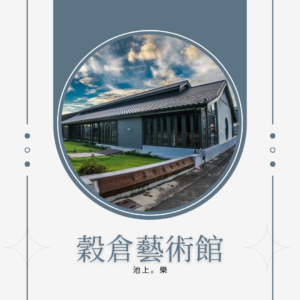
Grain Barn Art Museum
The Chihshang Grain Barn Art Museum was completed in 1959 and originally served as the grain barn for the Jianxing Rice Mill. Mr. Liang Zhengxian of the Duoli Rice Company actively offered his family’s old grain barn for the project, which was then transformed by architect Chen Guanhua’s team into the new landmark of Chihshang, the “Chihshang Grain Barn Art Museum.”
The architectural design of the barn retained its original structure, while creating a large and two smaller exhibition halls. These spaces can be used for single exhibitions of large works, as well as thematic or series exhibitions. The façade features a floor-to-ceiling glass corridor that invites natural light from the outdoors, seamlessly blending the exhibits with the expansive green rice fields outside, creating a vast, breathtaking landscape that leaves visitors in awe.
Once a grain barn that preserved the rural memories of local residents, it has now transformed into a platform for the promotion of art. The old structure has been rejuvenated, offering an exciting and dynamic space for creativity to thrive.
